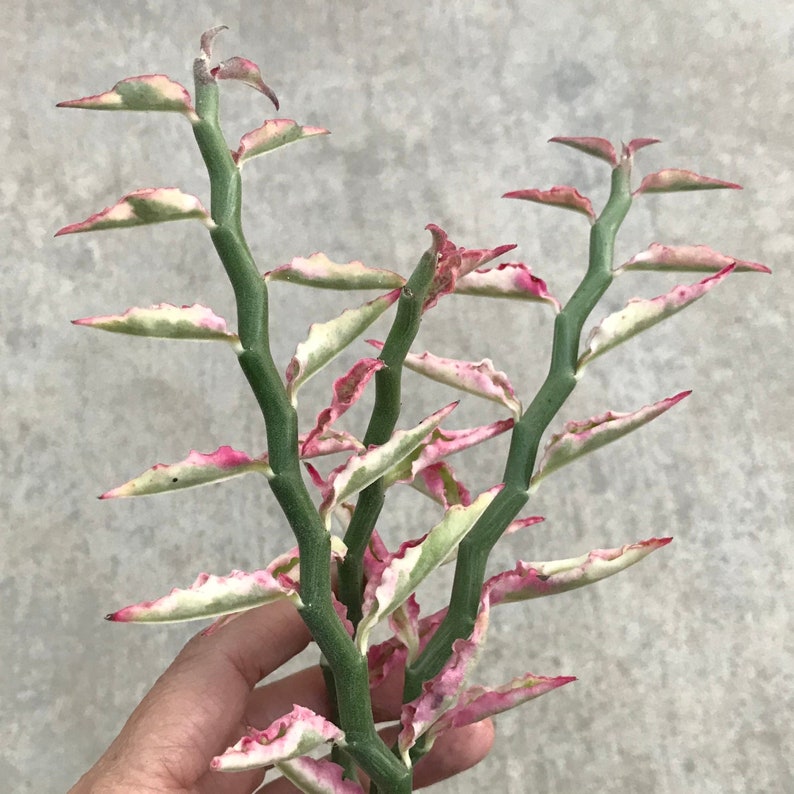

If your dog does not receive veterinary attention, his chance for a full recovery declines greatly. The severity of the toxicity will be determined by the amount your dog consumed. Toxicity from the devil's backbone plant may be considered moderate to severe. If your dog is suffering incoordination, weakness, confusion or any related symptoms, the veterinarian will try to keep him calm and quiet to avoid any unnecessary excitement. For example, if your dog is seizing, an anti-seizure medication will be administered. Your dog will be kept on monitoring equipment until his heart returns to its normal function.Īdditional medications will be administered according to your dog’s needs. If your dog’s heart rate is abnormal or part of his heart is malfunctioning, the veterinarian may administer medications to counteract these abnormalities. Your dog will be put on heart monitoring equipment to allow constant readings of the heart which will allow the veterinarian to observe exactly how the heart is functioning. If the vomit is clear and unsuccessful at producing any plant remnants, she may administer activated charcoal to bind and absorb the remaining toxin before the body does. Your veterinarian may induce vomiting in your dog to expel any remaining plant particles from his stomach. This will allow for proper identification of the plant and therefore the toxin it contains.įluid therapy will be started immediately to flush the toxin from your dog’s body quickly and efficiently. The veterinarian may also want to perform an ultrasound or an ECG as another form of assessment of the heart. If you witnessed your dog ingesting this plant, bring it with you to the veterinarian’s. If your dog is experiencing diarrhea, a fecal sample may be taken and tests performed to rule out internal parasites or bacterial overgrowth.Ī radiograph may be taken to allow the veterinarian a closer look at your dog’s heart if he is experiencing cardiac issues. If your dog vomits while at the clinic, the veterinarian will examine the contents for any evidence as to what he ingested. The veterinarian may also perform a urinalysis for further evaluation of kidney function. A packed cell volume (PCV) may also be performed to determine hydration status. A complete blood count (CBC) and chemistry panel will provide the veterinarian with needed information for proper assessment. Blood work will be performed to give the veterinarian a broad look as to how the internal organs are functioning as a result of the poisoning. Ransom seconds this 'To keep curious paws away from danger, it is best to remove these plants from easily accessible areas of the garden and house.A physical examination of your pet will be the first step of the diagnosis, unless your pet needs emergency care for stabilization. To an animal plants can look like toys, so giving them their own pet-safe toys to play with may help to distract them and keep them away from your plants.' Cats hate the smell of citrus, so you can spray diluted lemon juice onto your plant to put them off. How can you stop pets eating plants?Īccording to the experts at BloomBox Club (opens in new tab), 'The best method is to move your plants out of reach (using high shelves that tiny paws cannot access).


If in doubt about a plant you already own, pop it up out of reach until you are clued up. Lily (Belladona and Kaffir are particularly toxic)Ĭlaire Ransom, the founder of Lazy Flora (opens in new tab) notes also that 'When cut, the leaves of a rubber plant will secrete sap that can be harmful to humans and pets alike, so take care when handling.' And remember to always research the exact house plant species you're planning on purchasing beforehand as guidelines can vary with species.If you have furry (or not furry) friends around, it is worth avoiding the following toxic indoor plants all-together, or keeping them completely out of reach. Unfortunately there are many plants that, although aesthetically pleasing and safe for humans, just aren’t an option for a home shared with pets. However, when left in a particularly warm conservatory or glasshouse in direct sunlight, the leaves may start to become bleached and scorched.' Recommends Ransom. Their colourful bracts last several months, making them the ideal house plant to sit in a sunny spot. 'Bromeliad plants are perfect for injecting a bit of colour into your plant selection whilst keeping pets safe.


 0 kommentar(er)
0 kommentar(er)
